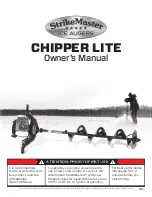
22
BG 805 981 BE (0201) QMG422.oi
Skilled personnel
When the QMA is in operation, hazardous voltages up to 600 VDC are present.
Under unfavorable conditions other built-in components in the vacuum chamber
(e.g. gauge heads) can be subjected to this voltage. If as a result such
components become dangerous to touch (also take into consideration the lines
and the connected equipment!), they must be arranged or protected in such a
way that no contact, no arcs, and no charge carrier flow can occur.
Connect the EP 422 to the corresponding connector on the QMA. Position it in
such a way that it does not touch the surrounding connectors and firmly tighten the
knurled nut.
Connect the control cable to the
EP
connector of the QME 125 (
→
24) or the
ep1
or
ep2
connector (see p.23) of the QMH 400. Lock the connector with the slide.
For optimum signal stability the EP 422 must be protected from vibrations,
temperature fluctuations, high temperature, humidity and strong magnetic
alternating fields.
The Teflon cable (max. 200 °C
→
65) allows remote operation if the temperature
on the QMA is too high. The EP 422 must be mounted outside the hot area (M3
threads on the housing). The cable must not be subjected to vibrations. Increased
noise levels must be expected.
125
The same applies for the QME 125-1 with 6 m cable length, however the
maximum cable temperature is 70 °C.
DANGER
The CP 400 may not be operated with a high voltage supply that can deliver
hazardous voltages or currents.
Switch the unit off and detach all cables before you open the cover.
Operation of the equipment with the cover removed is not allowed.
The inside of the CP 400 may not be touched or contaminated. Finger
smudges can cause noise pulses or even arcing.
Remove the SEM connector plate of the QMA (
→
[2], [4]).
Remove the 6 screws A and the cover of the CP 400.
Unfasten the 3 screws C so that the full cross-section of the sockets is exposed.
Caution, do not lose the screws!
Carefully slide the CP 400 over the feedthroughs; the latter must not be stressed
because they can break!
Fix the CP 400 with the 4 screws B.
Tighten the 3 screws C.
Fasten the cover with all 6 screws A including washers.
For conversion to EP 422 operation perform the above steps in reverse order.
4.3 EP 422
4.4 CP 400
















































